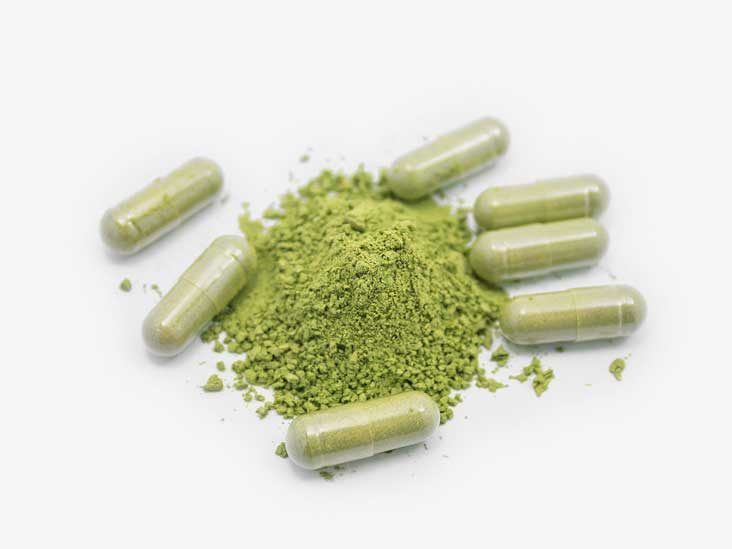Chlorophyllin: Is it Effective Odor Control?
Unpleasant odors—whether from the body, breath, or even wounds—can have a significant impact on self-confidence and quality of life. Over the years, natural compounds have been explored for their ability to neutralize or reduce odor, and chlorophyllin has emerged as one of the most researched options. Marketed as an “internal deodorant,” chlorophyllin has been widely used for decades, but does science support its effectiveness in odor control?
In this blog, we’ll explore what chlorophyllin is, how it works, its applications, and whether it lives up to its reputation as a natural solution for odor.
What is Chlorophyllin?
Chlorophyllin is a semi-synthetic derivative of chlorophyll, the green pigment responsible for photosynthesis in plants. While natural chlorophyll is fat-soluble and unstable outside of plant cells, chlorophyllin is made by replacing the magnesium atom in chlorophyll with copper and converting its hydrophobic tail into a sodium or copper salt.
This transformation makes chlorophyllin:
-
Water-soluble – easier to digest and mix in liquid solutions.
-
Stable – resistant to degradation when exposed to heat and light.
-
Biologically active – still retains antioxidant and detoxifying properties.
Because of these qualities, chlorophyllin has been widely incorporated into dietary supplements, mouthwashes, wound-care products, and even cosmetics.

Can Chlorophyll Help Combat Body Odor?
Body odor is a common concern for many and is often associated with excessive sweating. However, it's not the sweat itself that causes the odor, but the bacteria on our skin breaking down sweat molecules into certain acids.
So, how might chlorophyll play a role in this process?
Chlorophyll is known to support detoxification processes in the body, meaning it can help maintain the proper elimination of toxins through waste. This detoxification process is what's believed to contribute to chlorophyll's potential for managing body odor and bad breath — when our bodies are able to efficiently eliminate toxins, it can result in less odor produced from our sweat and breath.
Further, the gut plays an essential role in determining body odor. Research indicates that gut microbiota can influence our body's scent, so a healthy gut is often associated with less pungent body odor. Chlorophyll can contribute to gut health, and by maintaining a healthy gut, it may help with body odor from the inside out.
Some anecdotal reports suggest that individuals taking chlorophyll supplements or incorporating more chlorophyll-rich foods into their diets have noticed a reduction in body odor. While these accounts are promising, scientific research in this area is still emerging. More studies are needed to establish a more direct link between chlorophyll consumption and body odor control.

How Does Chlorophyllin Work for Odor Control?
The main theory behind chlorophyllin’s odor-fighting ability is that it acts as an internal deodorizer. Instead of masking odors with fragrance, it reduces odor at the source. The mechanisms may include:
-
Binding to Odor-Causing Compounds
Chlorophyllin may bind with molecules such as trimethylamines, indoles, and sulfides that are responsible for strong odors in sweat, breath, and stool. By neutralizing these compounds, chlorophyllin reduces the intensity of odor. -
Antioxidant and Detoxification Properties
Free radicals and oxidative stress can contribute to the breakdown of compounds into unpleasant-smelling byproducts. Chlorophyllin, as an antioxidant, may reduce this oxidative degradation. -
Supporting Gut Health
Some body odors are linked to gut health and the breakdown of proteins and sulfur-containing foods. Chlorophyllin has shown mild antimicrobial and detoxifying effects that may help rebalance gut flora and reduce odor formation. -
Topical Odor Reduction
In wound care, chlorophyllin has been applied directly to wounds or used in dressings to help reduce odor caused by bacterial decomposition of tissue.

Scientific Evidence: Does Chlorophyllin Really Work?
The use of chlorophyllin as an odor-control agent dates back to the 1940s, when it was studied in hospitals for patients with colostomies, incontinence, or wounds that produced foul odors. Let’s look at the evidence:
-
Colostomy and Ileostomy Patients
Studies from the 1950s and 1960s showed that oral chlorophyllin (100–200 mg daily) helped reduce fecal odor in patients with colostomies or ileostomies. -
Wound Odor Control
Clinical reports documented improvement in malodor when chlorophyllin ointments or dressings were applied to wounds, pressure ulcers, and abscesses. This application is still used today in certain wound-care settings. -
Body Odor and Breath
Research in this area is limited and older. Some individuals with trimethylaminuria (“fish odor syndrome”) reported improvement when using chlorophyllin supplements. However, for general body odor and bad breath, studies are less conclusive, though anecdotal reports remain positive. -
Modern Clinical Use
Today, chlorophyllin is still marketed as an internal deodorant supplement, especially for people with chronic digestive issues, ostomies, or metabolic odor disorders. While scientific studies are relatively few, its long history of use and safety record supports its continued popularity.

Forms of Chlorophyllin for Odor Control
Chlorophyllin is available in several forms depending on its intended use:
-
Capsules/Tablets – Commonly marketed as “internal deodorant” supplements. Dosages typically range from 100–300 mg daily.
-
Liquid Extracts – Easy to mix with water or smoothies.
-
Topical Ointments & Dressings – Applied directly to wounds to reduce odor and support healing.
-
Mouthwashes – Sometimes included as a natural ingredient to help with halitosis (bad breath).
:max_bytes(150000):strip_icc()/GettyImages-1396359028-c08aaa92214641398fbc0912b515bcef.jpg)


Chlorophyllin vs. Other Odor Control Methods
Chlorophyllin isn’t the only approach to controlling odor. Let’s compare:
-
Deodorants & Antiperspirants: Mask or prevent sweat odor externally. Chlorophyllin works internally.
-
Probiotics: Target gut bacteria to reduce odor-causing compounds.
-
Activated Charcoal: Another internal deodorizer but may cause constipation if overused.
-
Dietary Changes: Avoiding sulfur-rich foods (garlic, onions, fish) can also help.
Chlorophyllin can be used alone or in combination with these methods for better results.
Conclusion
Chlorophyllin has a long history of being used as an internal deodorant, particularly for individuals with colostomies, digestive odor issues, or metabolic conditions. While scientific studies are somewhat limited and many date back decades, evidence supports its ability to neutralize odors at the source by binding odor-causing compounds, reducing oxidative stress, and supporting detoxification.
For general body odor and breath control, chlorophyllin may not replace conventional hygiene practices, but it can be a valuable natural supplement for those seeking additional odor support.
References
- Chlorophyll and chlorophyllin. (2009).
https://lpi.oregonstate.edu/mic/dietary-factors/phytochemicals/chlorophyll-chlorophyllin - Enzymatic debriding agents: An evaluation of the medical literature. (2008).
https://www.hmpgloballearningnetwork.com/site/wmp/content/enzymatic-debriding-agents-an-evaluation-medical-literature - Jiang L, et al. (2018). Efficacy and tolerability of an acne treatment regimen with antiaging benefits in adult women.
https://www.ncbi.nlm.nih.gov/pmc/articles/PMC6011872/ - McCook J, et al. (2016). Ability of sodium copper chlorophyllin complex to repair photoaged skin by stimulation of biomarkers in human extracellular matrix.
https://www.ncbi.nlm.nih.gov/pmc/articles/PMC4966572/ - Sigler ML. (2015). Assessment of the safety and efficacy of topical copper chlorophyllin in women with photodamaged facial skin.
https://pubmed.ncbi.nlm.nih.gov/25844615/ - Stephens T, et al. (2015). Pilot study of topical copper chlorophyllin complex in subjects with facial acne and large pores.
https://jddonline.com/articles/dermatology/S1545961615P0589X - What you need to know. (2020).
https://ods.od.nih.gov/factsheets/WYNTK-Consumer/


